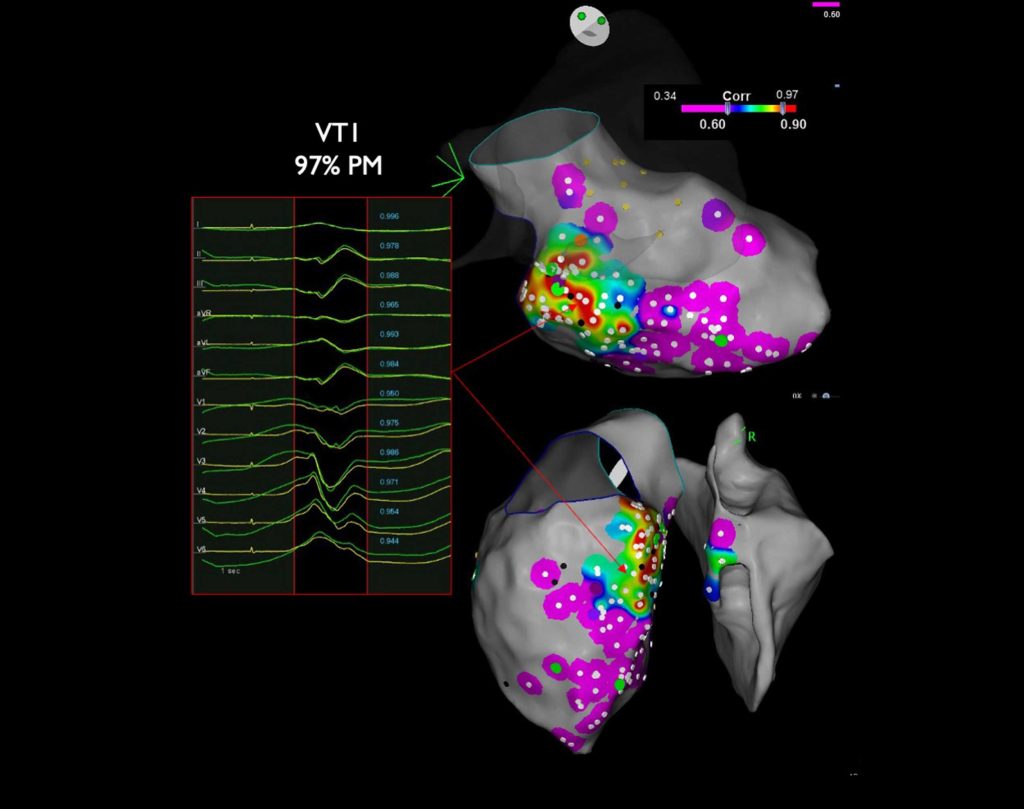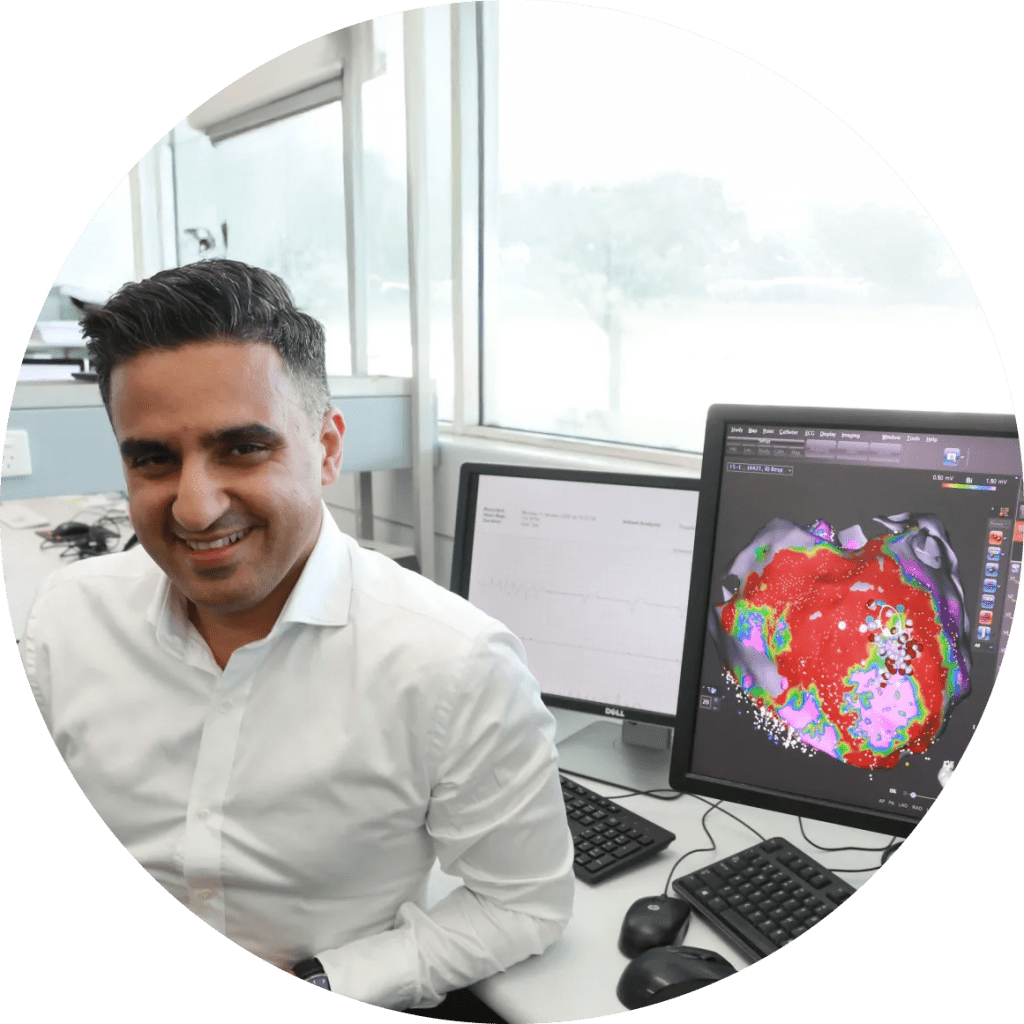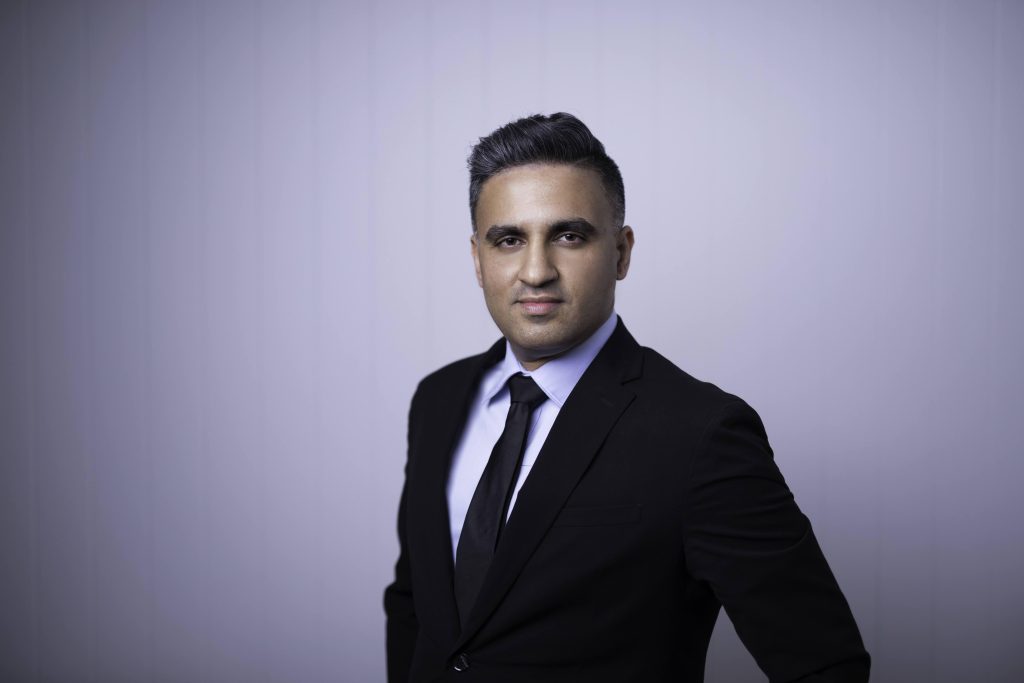Catheter Ablation Therapy

Targeted treatment for heart rhythm disorders using precision and innovation
For patients with abnormal heart rhythms, medication alone is not always effective or well tolerated. Catheter ablation therapy offers a minimally invasive, highly targeted solution that can eliminate the source of arrhythmias and restore a more stable, natural heartbeat.
At his practice in Sydney, A/Prof Saurabh Kumar provides expert ablation therapy for a wide range of arrhythmias. As a Cardiologist and Interventional Electrophysiologist with over 15+ years of experience, he uses the latest techniques—including non-thermal pulsed field ablation—to deliver precise, safe, and lasting results.
What is Catheter Ablation?
Catheter ablation is a specialised procedure used to treat heart rhythm disorders (arrhythmias) by neutralising the small areas of heart tissue responsible for abnormal electrical signals. It is performed through thin catheters inserted into blood vessels (typically in the groin) and guided to the heart using 3D mapping and imaging technology.
Once the arrhythmogenic tissue is located, controlled energy is delivered to modify or destroy the cells causing the irregular rhythm. The goal is to disrupt the faulty electrical circuit, allowing the heart to return to a normal rhythm without ongoing reliance on medication.
Catheter ablation is usually performed under light sedation or general anaesthetic and typically involves a short hospital stay with rapid recovery.

Types of Ablation Techniques Offered
Radiofrequency Ablation
This technique uses heat generated by high-frequency electrical currents to destroy the abnormal heart tissue. It has been widely used for many years and remains a highly effective option, particularly for conditions such as:
- Atrial flutter
- AV nodal re-entrant tachycardia (AVNRT)
- Accessory pathway tachycardias (e.g. Wolff-Parkinson-White syndrome)
- Focal atrial tachycardia
- Premature ventricular contractions
Cryoablation
Pulsed Field Ablation (PFA)
A new and promising technique, pulsed field ablation is a non-thermal method that uses high-voltage electrical pulses to cause irreversible electroporation—a process that creates microscopic pores in the cell membrane, leading to selective cell death.
Because PFA affects only cardiac cells and spares surrounding tissue (such as the oesophagus and phrenic nerve), it has the potential to significantly improve safety in atrial fibrillation ablation. A/Prof Kumar is among the early adopters of this technique in Australia through his role at Westmead Hospital, ensuring eligible patients can access this cutting-edge approach as it becomes available.
Conditions Treated with Ablation
Atrial Fibrillation (AFib)
Atrial Flutter
AV Nodal Re-Entrant Tachycardia (AVNRT)
Accessory Pathway Tachycardias
Ventricular Tachycardia (VT)
Focal Atrial Tachycardia & Premature Ventricular Contractions (PVCs)
What to Expect from the Procedure
Before the procedure, patients undergo a thorough workup, including ECGs, imaging, and possibly an electrophysiology study to localise the source of the arrhythmia. A/Prof Kumar will explain the procedure in detail, including the risks, benefits, and expected outcomes.
Catheter ablation typically takes between 2–4 hours, depending on the complexity of the case. Most patients are able to return home the same day or after a short overnight stay. A brief recovery period is expected, but most individuals return to normal activities within a few days.
In the weeks and months that follow, the heart may continue to “remodel” and adjust—meaning some symptoms may transiently return before settling. A/Prof Kumar monitors each patient closely during this period and tailors follow-up care accordingly.


Take Control of Your Heart Health Today.
A/Prof Saurabh Kumar brings over 15+ years of clinical expertise to the care of patients with heart rhythm disorders and general cardiac conditions. He is widely regarded within the Australian cardiology community and internationally for his depth of knowledge, collaborative style, and commitment to patient-centred care.
He holds dual roles as a Staff Specialist Cardiologist and Cardiac Electrophysiologist at Westmead Hospital and Clinical Associate Professor of Medicine at the University of Sydney. He currently serves as the Program Director for Ventricular Arrhythmias and Sudden Cardiac Death at Westmead Hospital and is the Translational Electrophysiology Lead at the Westmead Applied Research Centre, University of Sydney.